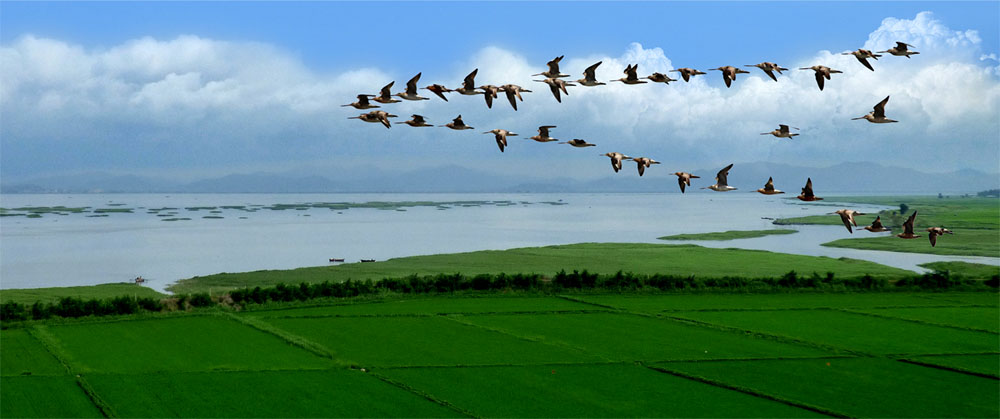News
Mundok Migratory Bird Reserve















The Mundok Migratory Bird Reserve covers an area of over 3 700 hectares in Mundok Country, South Phyongan Province, on the west coast of Korea.
The reserve consists of a delta occurred by the fluvial action and sediment accumulation of the Chongchon and Taeryong rivers and tidelands featuring reed fields, paddy fields and swamps, which provide conditions indispensable to the inhabitation of migratory birds.
There are more than 100 species of plants, including nearly 20 communities of plants. It is also inhabited by over 40 kinds of annelids, mollusks and crustaceans and 60 odd fish species.
Such features of the reserve attract a large flock of migratory birds every spring and autumn, and serve as a stopover of the migrant birds in spring.
Ducks, wild geese, cranes and snipes are frequently observed in the paddy fields and tidelands of the reserve in winter and the transition period, and most of ducks and wild geese pass the winter in the reserve.
It has been observed that over 20 species of birds that are rare, endangered and weak made a stopover in the reserve.
Spoonbills, Numenius madagascariensis, hooded cranes, swan geese, white-fronted geese, dunlins and other globally-endangered birds observed in the reserve account for more than one per cent of global and regional totals. In particular, the number of swan geese reaches over 50 per cent of global ones.
In June last year breeding activities of shelduck were observed for the first time in the area, attracting a great attention of ornithologists.
286 bird species have been observed in the reserve area until last year, 50 odd of them being non-migratory birds, over 80 summer birds, over 40 winter birds, and more than 90 transient ones. More than 130 000 birds at the maximum were observed in one year.
The government of the Democratic People’s Republic of Korea, which puts forward a policy of protecting the ecological environment and shows deep concern, designated the Mundok area as a migratory bird reserve in 1995. Since then, big efforts have been made to preserve the natural environment in this area.
The reserve management station was established, and it directs consistent efforts not only to preserving the environment but to rehabilitating the areas hit by natural calamities. It also conducts various undertakings in a planned way to protect and multiply invertebrate animals and aquatic resources, thus providing birds with rich feeding conditions.
Experts from the biodiversity institute under the State Academy of Sciences are often seen observing migratory birds in the area.


